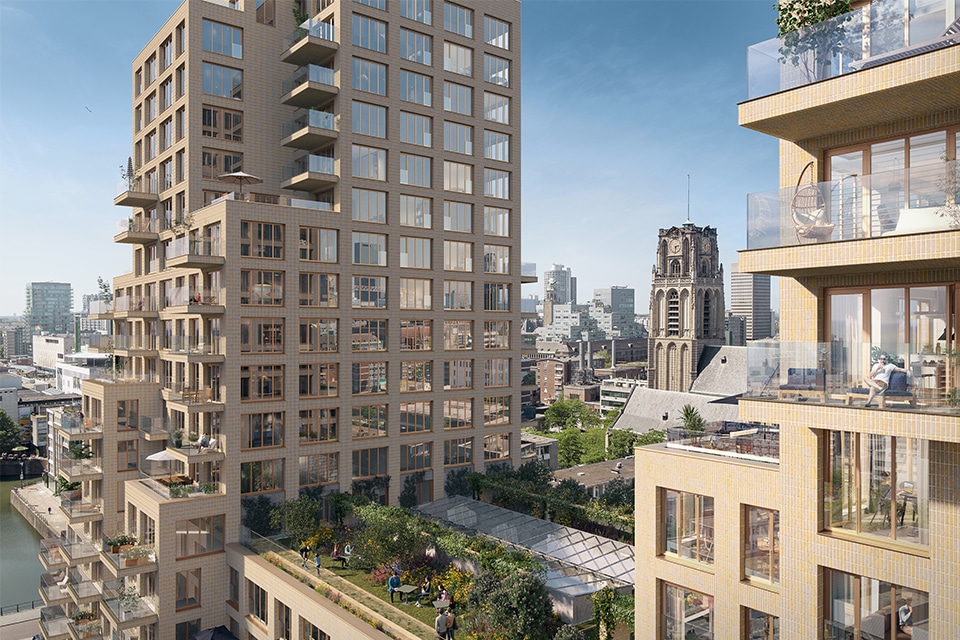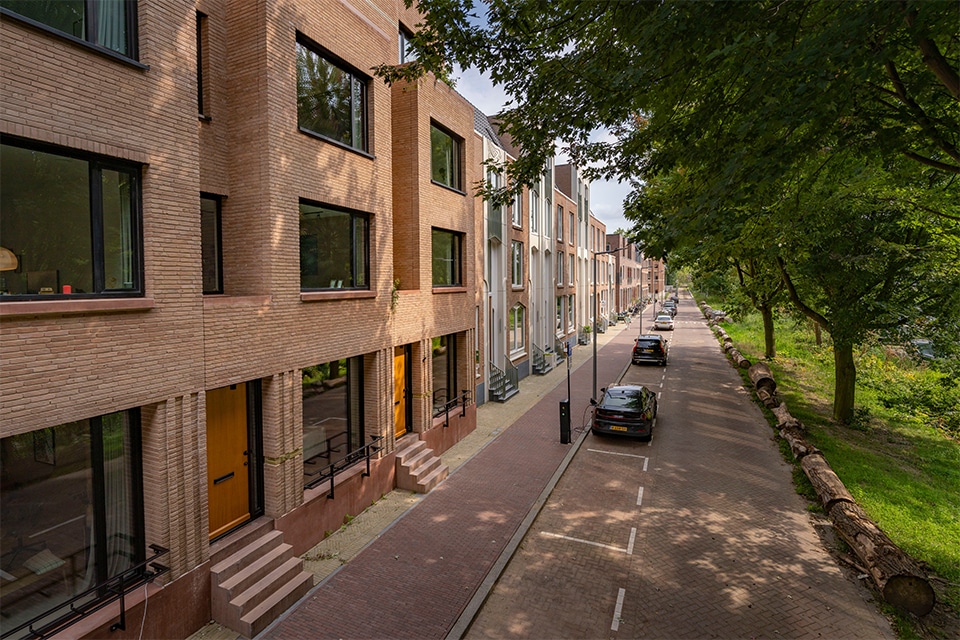
Demolition according to the Japanese method
The redevelopment of the Meelfabriek in Leiden is one of the largest monumental renovation projects in our country, and densely built too. In that limited space, however, some buildings also had to be stripped and even completely demolished. So military precision was a requirement. Leave that to AA Sloopwerken, which used the Japanese demolition method.
"Given the limited space in this inner-city project, general contractor Van der Wiel Bouw benefited from a demolition contractor who could think out-of-the-box," begins Laura Vijfhuizen of AA Demolition Works. "Then you've come to the right place. We work a lot in inner-city areas so we are used to demolition in limited space and coming up with creative solutions. That was also needed here at the Meelfabriek. We started by stripping the Meelpakhuis, which we completely emptied from the inside. Including screeds and facades. Then it was the turn of the adjacent silo building, which had to be completely demolished."
Down 'eaten'
The silo building was surrounded by other buildings and situated on one side by the water, Vijfhuizen outlines the situation. "To demolish this building with policy, we used the Japanese method. First, the entire building was scaffolded all around and we placed bulkheads over the silos. Then two small demolition cranes of 10 and 5 tons were placed on top of the silo building. They "ate" their way down, so to speak, dumping the debris into the silos. The silo building was 42 meters high. The moment we reached a realistic and safe height, the demolition cranes could drive down over the rubble. Then a large crane was brought in by water and the debris was removed by water and unloaded directly at the processor. It was the shortest hit with the least inconvenience. A method we have also used before, by the way, at the Scheepvaartmuseum in Amsterdam."
AA Demolition Works looks back on a successful project, in which it remediated not only 7,000 tons of concrete rubble but also the necessary asbestos. "It was also a very interesting project for us, where our knowledge and experience came in handy," says Vijfhuizen. "Prior to demolition, a number of monumental parts were also dismantled, such as the famous slide and the Leiden Keys, which were given a nice spot again in the new building."




